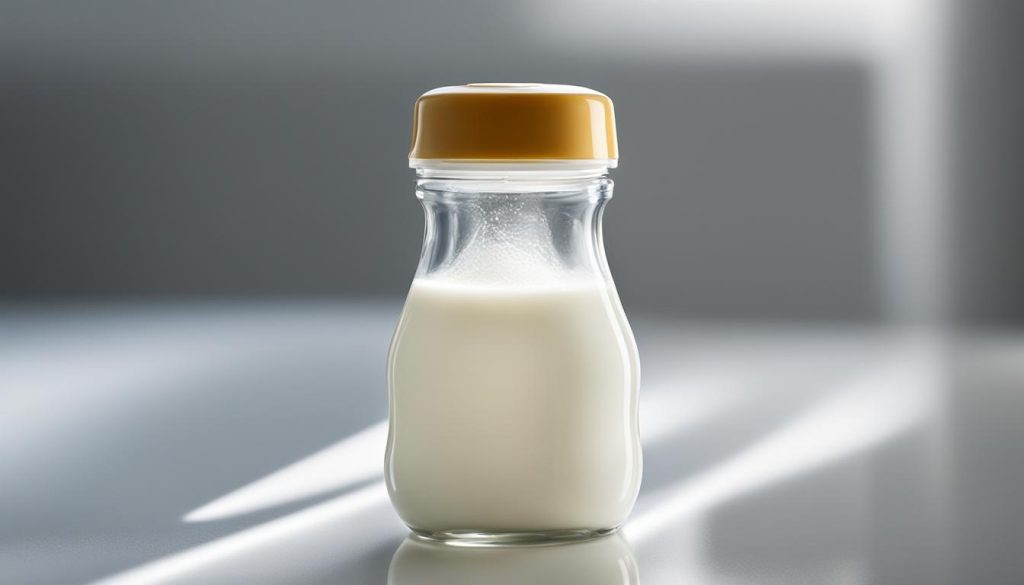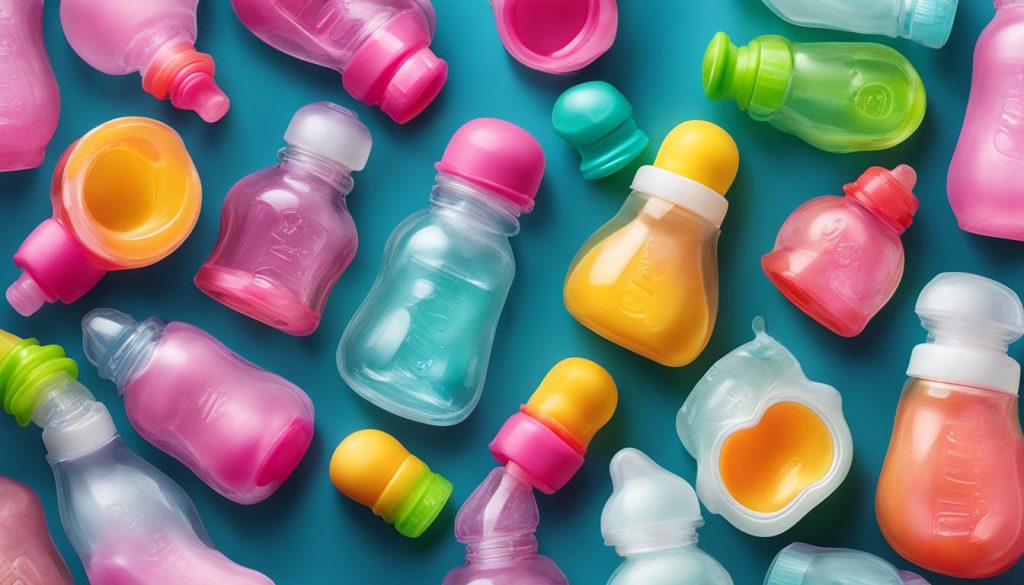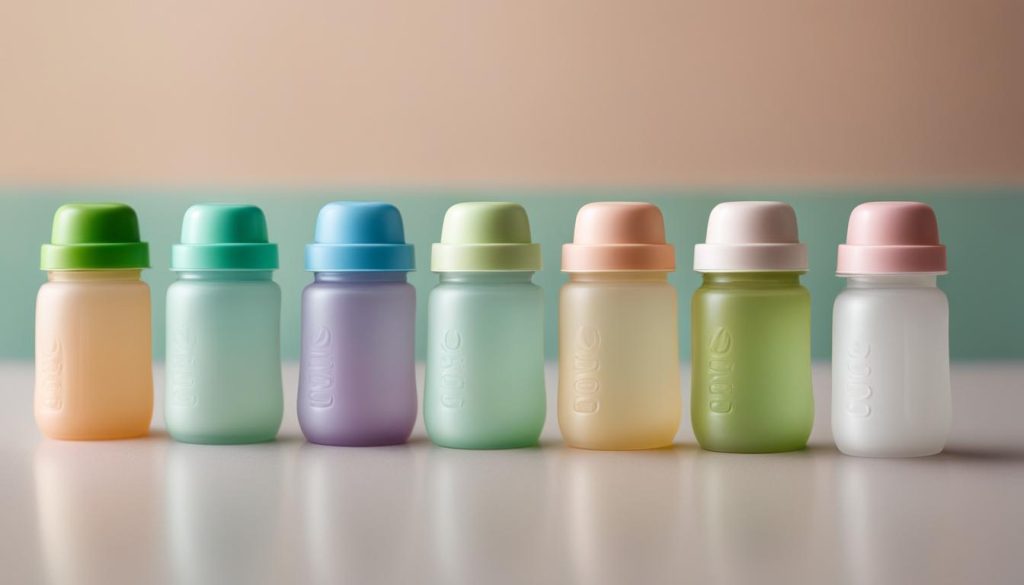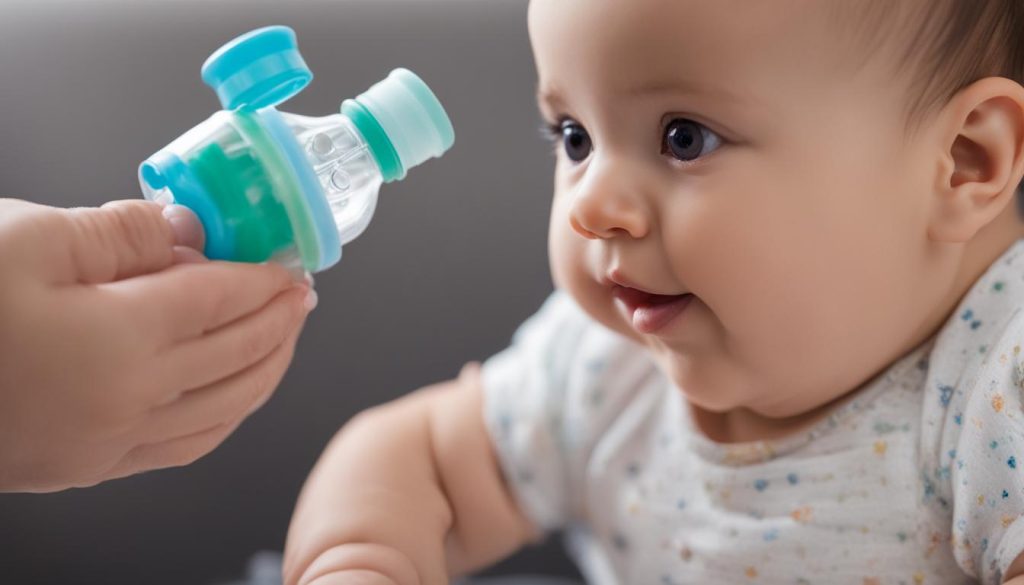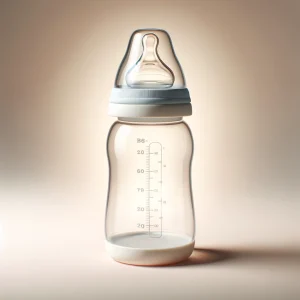 When it comes to infant feeding, baby feed bottles are essential for both breast milk and formula feeding. As a parent, it is important to understand the different types of baby bottles available and the materials used to make them. In this article, I will guide you through the world of baby feed bottles, providing you with the knowledge you need to make informed decisions for your little one.
When it comes to infant feeding, baby feed bottles are essential for both breast milk and formula feeding. As a parent, it is important to understand the different types of baby bottles available and the materials used to make them. In this article, I will guide you through the world of baby feed bottles, providing you with the knowledge you need to make informed decisions for your little one.
Whether you are a new parent or a seasoned one looking to update your baby bottle set, understanding the options available is crucial. From glass baby bottles to plastic and silicone ones, each type has its pros and cons. By choosing the best baby bottles for your baby’s needs, you can ensure a safe and enjoyable feeding experience.
In addition to the types of baby bottles, the nipples used are equally important. Bottle nipples come in different materials such as latex and silicone, each offering unique features. Finding the right fit for your baby’s feeding needs is essential to ensure proper nourishment and prevent any discomfort.
Hygiene is of utmost importance when it comes to baby bottles and infant feeding. I will also provide you with valuable tips on bottle maintenance and sterilization. From cleaning bottles and nipples after each use to choosing the right sterilization method, I will guide you on how to keep your baby’s feeding supplies clean and free from harmful bacteria.
By the end of this article, you will have the knowledge and understanding to make informed choices for your baby’s feeding needs. From selecting the best baby bottles and nipples to maintaining hygiene and sterilizing bottles, I will equip you with the tools you need to ensure the health and well-being of your little one during mealtime.
So, let’s dive into the world of baby feed bottles and discover everything you need to know to provide the best feeding experience for your baby.
Types of Baby Bottles: Choosing the Right One for Your Baby
When it comes to selecting a baby bottle for your little one, it’s essential to consider the different types available. Each type has its own advantages and considerations, ensuring that you can make an informed decision that meets your baby’s needs. Let’s explore the three main types of baby bottles: glass, plastic, and silicone.
Glass Baby Bottles
Glass baby bottles have gained popularity among parents who prioritize non-toxic and environmentally-friendly options. These bottles are made from durable borosilicate glass, which is resistant to temperature changes and less likely to absorb odors and stains. Glass bottles are not only safe and free from harmful chemicals, but they also ensure that the taste of the milk remains untainted. It’s important to note that glass bottles may be heavier and more fragile compared to other types, so extra care should be taken during handling and storage.
Plastic Baby Bottles
Plastic baby bottles are a lightweight and convenient option for parents. When choosing plastic bottles, it is crucial to select BPA (bisphenol A) free bottles. BPA is a chemical that has been linked to potential health risks. Fortunately, many manufacturers now offer BPA-free plastic baby bottles, providing a safer option for infants. Plastic bottles are durable and less likely to break, making them suitable for on-the-go feeding. It is advisable to replace plastic bottles regularly to ensure they are in good condition and free from scratches or cracks that may harbor bacteria.
Silicone Baby Bottles
Silicone baby bottles are known for their flexibility, durability, and ease of cleaning. These bottles are made from food-grade silicone, a hypoallergenic material that is resistant to stains and odors. Silicone bottles are lightweight, making them comfortable for both babies and parents to handle. Additionally, the soft and squeezable nature of silicone bottles allows for easy feeding without much effort. They are also microwave and dishwasher safe, making cleaning and sterilization a breeze.
| Type | Advantages | Considerations |
|---|---|---|
| Glass Baby Bottles | Non-toxic, environmentally-friendly, no taste transfer | Heavier, more fragile |
| Plastic Baby Bottles | Lightweight, convenient for travel | Choose BPA-free, replace regularly |
| Silicone Baby Bottles | Flexible, durable, easy to clean | Not suitable for very hot liquids |
Ultimately, the choice between glass, plastic, and silicone baby bottles depends on your personal preferences and your baby’s needs. It’s important to consider factors such as safety, convenience, and ease of cleaning when making your decision. By understanding the advantages and considerations of each type, you can confidently choose the best baby bottle for your little one.
Nipple Types: Finding the Right Fit for Your Baby
When it comes to feeding your baby, choosing the right bottle nipple is essential for their comfort and well-being. Nipples come in different materials, such as latex and silicone, each with its own benefits and considerations.
Latex Nipples
Latex nipples are softer and more flexible, providing a more natural feel for your baby. The softness mimics the texture of the breast, which can be comforting for nursing babies. However, it’s important to note that latex nipples need to be replaced regularly as they can wear down and become less durable over time.
Silicone Nipples
Silicone nipples are another popular option, known for their durability and temperature resistance. They are less likely to break or tear, making them a long-lasting choice for bottle feeding. Silicone nipples also withstand boiling water, which is an effective method for sterilization. They are easy to clean and maintain, making them a convenient option for busy parents.
It’s important to find the right fit for your baby’s feeding needs. Some babies may prefer latex nipples for their softness, while others may prefer the firmer texture of silicone nipples. Experimenting with different nipple types can help you determine what works best for your baby’s comfort and feeding experience.
“Choosing the right nipple type is crucial for your baby’s comfort and feeding experience.”
In addition to choosing the right nipple type, paced feeding is a technique that can enhance your baby’s feeding experience. Paced feeding involves allowing your baby to control the flow of milk by taking breaks during feeding. This helps prevent overfeeding, reduces the risk of gas or colic, and allows your baby to learn self-regulation.
By understanding the different nipple types available and considering your baby’s preferences, you can ensure a positive feeding experience that promotes their comfort and overall well-being.
| Nipple Type | Material | Advantages | Considerations |
|---|---|---|---|
| Latex Nipples | Soft and flexible | Mimics breast texture | Needs regular replacement |
| Silicone Nipples | Durable and temperature resistant | Long-lasting option | Firmer texture |
Bottle Maintenance and Sterilization: Tips for New Parents
Proper bottle maintenance and sterilization are essential for keeping your baby’s feeding supplies clean and free from harmful bacteria. Here are some tips to help you ensure the hygiene and safety of your baby’s bottles:
Cleaning Bottles and Nipples
- After each use, disassemble the bottles and nipples.
- Rinse them with warm water to remove any remaining milk or formula.
- Use a bottle brush and mild dish soap to thoroughly clean the bottles and nipples.
- Pay special attention to the nipple holes, as they can accumulate residue and become clogged.
- Rinse everything again with clean water to remove any soap residue.
Sterilizing Bottles
Sterilizing your baby’s bottles on a regular basis is crucial, especially for infants under one year old. Here are a few methods you can use:
- Baby Bottle Sterilizer: Invest in a baby bottle sterilizer, which uses steam to kill bacteria. Follow the manufacturer’s instructions for proper use.
- Boiling: Boil the bottles and nipples in a pot of water for at least five minutes. Make sure they are fully submerged and keep an eye on the water level to prevent it from boiling dry.
- Chemical Sterilizing Solution: Some parents opt for chemical sterilizing solutions that can be used to soak the bottles and nipples. Follow the instructions on the product labels.
Replacing Damaged Bottles
Regularly inspect your baby’s bottles for any signs of damage, such as cracks, chips, or worn-out nipples. These can harbor bacteria and may affect the overall safety and functionality of the bottles. If you notice any damage, it’s important to replace the affected bottles or nipples with new ones to ensure your baby’s well-being.
By following these tips for bottle maintenance and sterilization, you can create a clean and safe feeding environment for your little one. Remember, good hygiene practices play a vital role in keeping your baby healthy and happy.
| Method | Pros | Cons |
|---|---|---|
| Baby Bottle Sterilizer | Convenient and efficient | Requires additional equipment |
| Boiling | Accessible and cost-effective | Requires careful monitoring |
| Chemical Sterilizing Solution | Easy to use | May leave a residual taste or odor |
Conclusion: Making Informed Choices for Infant Feeding
After exploring the different types of baby bottles, nipple options, and the importance of bottle maintenance and sterilization, it’s clear that making informed choices for infant feeding is crucial. As parents, we want to ensure the utmost safety, comfort, and convenience for our little ones.
Investing in a baby bottle warmer can be a game-changer, especially during those middle-of-the-night feedings. With the gentle and controlled heat, it allows us to warm up bottles quickly and efficiently, providing our babies with milk at the perfect temperature.
When it comes to newborn feeding bottles, selecting ones specifically designed for their delicate needs is key. These bottles are thoughtfully crafted to promote a proper latch and comfortable feeding experience, ensuring our newborns get the nourishment they need.
Lastly, maintaining proper bottle maintenance and sterilization practices is essential for our baby’s health. Regularly cleaning bottles and nipples after each use and opting for sterilization methods such as using a baby bottle sterilizer or boiling water helps prevent the growth of harmful bacteria. Additionally, knowing when to transition from bottles to cups and being aware of the importance of replacing damaged bottles are important steps in ensuring a safe feeding journey for our little ones.
FAQ
What types of baby bottles are available?
Glass baby bottles, plastic baby bottles, and silicone baby bottles are some of the options available.
Are plastic baby bottles safe?
Plastic baby bottles can be safe as long as they are BPA-free to avoid exposure to harmful chemicals.
What are the advantages of silicone baby bottles?
Silicone baby bottles are known for their flexibility and durability.
What materials are bottle nipples made of?
Bottle nipples can be made of latex or silicone.
What are the advantages of latex nipples?
Latex nipples are softer and more flexible.
How often should latex nipples be replaced?
Latex nipples should be replaced regularly to ensure proper feeding.
What are the advantages of silicone nipples?
Silicone nipples are more durable and can withstand higher temperatures.
What is paced feeding?
Paced feeding is a technique that allows babies to have breaks during feeding and control the flow of milk.
How should baby bottles be cleaned?
Baby bottles should be cleaned thoroughly after each use.
How should baby bottles be sterilized?
Baby bottles can be sterilized using a baby bottle sterilizer or by boiling them in water.
Why is it important to replace damaged bottles?
Replacing damaged bottles helps maintain hygiene and ensures the safety of your baby during feeding.
When should babies transition from bottles to cups?
Knowing when to transition from bottles to cups varies for each baby, but it’s generally around 12-18 months old.
What are the benefits of using a baby bottle warmer?
A baby bottle warmer can make it easier to warm up bottles when needed.
Are there special bottles for newborns?
Yes, there are newborn feeding bottles designed specifically to ensure a proper latch and feeding experience.

